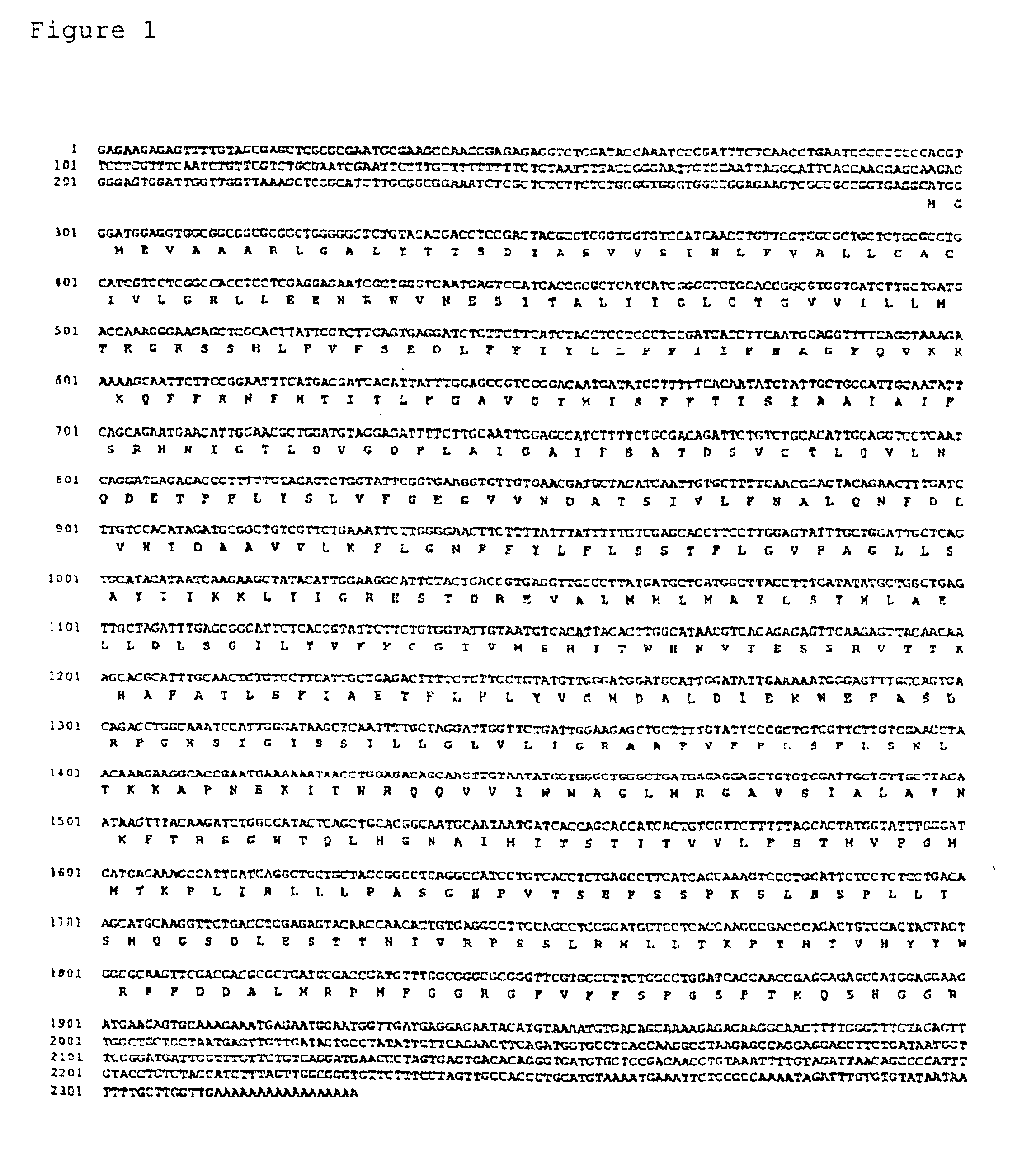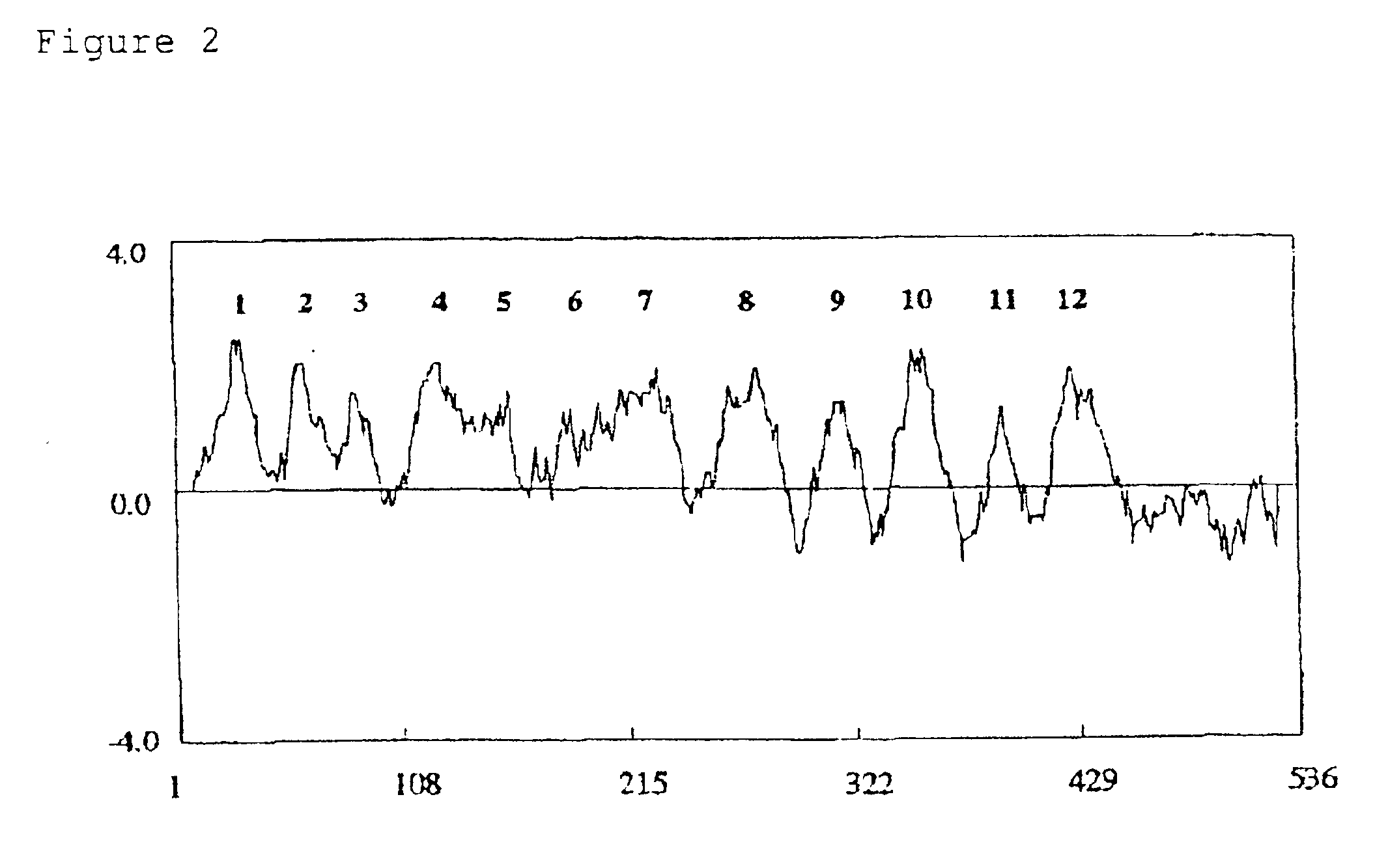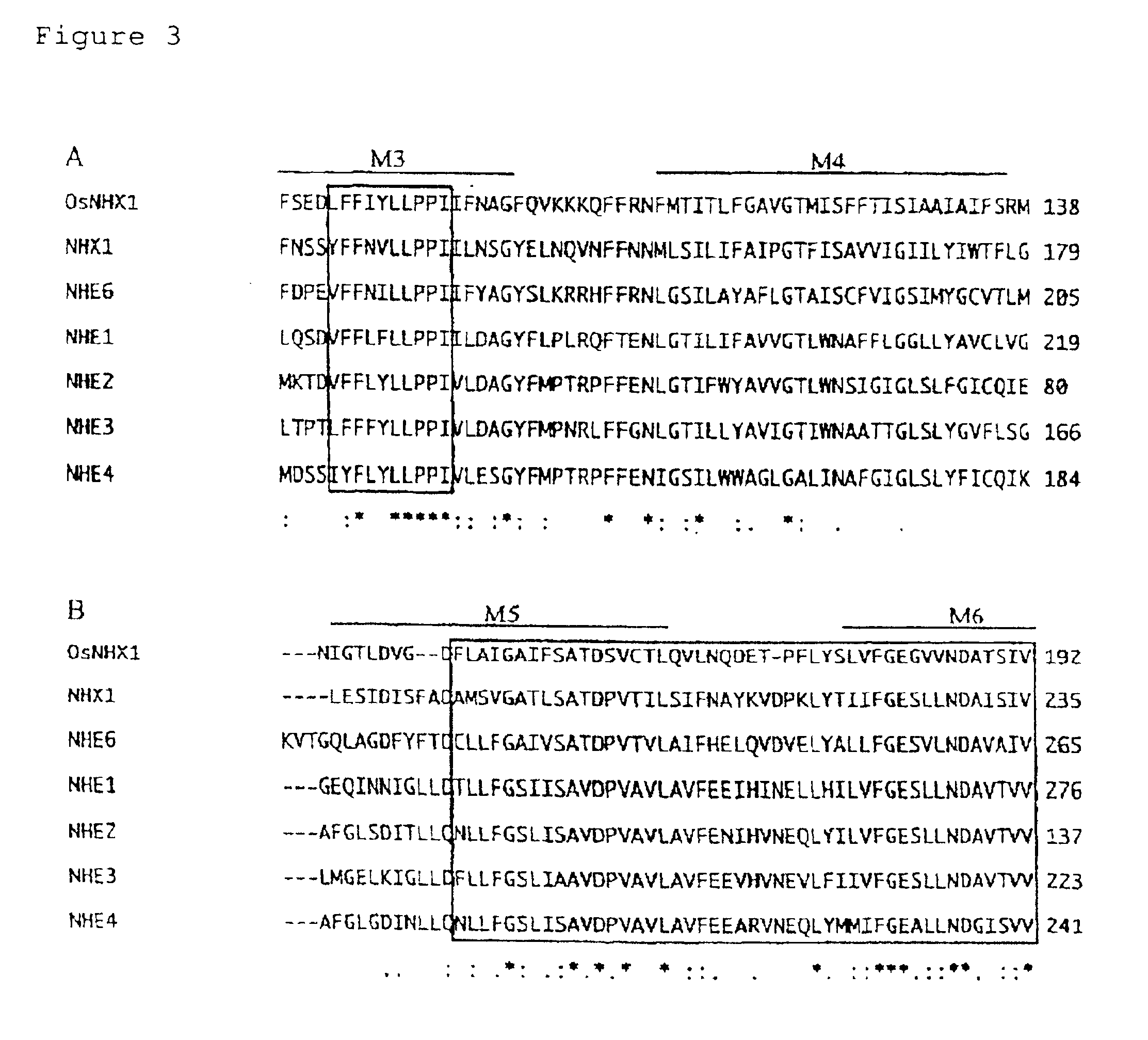Sodium/proton antiporter gene
a technology of antiporter gene and salt, which is applied in the field of new na +/h + antiporter, can solve the problems of high osmotic, salt accumulation, and still arisen problems, and achieve the effects of suppressing protein expression, suppressing protein expression, and suppressing protein expression
- Summary
- Abstract
- Description
- Claims
- Application Information
AI Technical Summary
Benefits of technology
Problems solved by technology
Method used
Image
Examples
example 1
[0071]Cloning of the Rice Na+ / H+ Antiporter Gene
[0072]A sequence having identity to Na+ / H+ antiporter (NHX1) obtained from budding yeast was analyzed from the database for higher plants of GeneBank. A cDNA clone from the cDNA library of rice panicle was identified. The amino acid sequence predicted from the clone had 37% identity with NHX1. It was presumed that the obtained cDNA clone did not have the full-length base sequence. Therefore, using the cDNA clone as a probe and using the cDNA library constructed from mRNA prepared from the root of rice (Oryza sativa L. cv Nipponbare) seedling as the template, selection of a cDNA clone having the full-length insertion was performed.
[0073]Rice seeds were imbibed overnight, and placed on cotton mesh suspended over a nutrient solution (0.5 mM NH4H2PO4, 1 mM KNO3, 0.5 mM MgSO4, 12.5 μM Fe-EDTA, 1 mM CaCl2, micronutrients) Cultivation was performed 7 days with a cultivation condition: day(brightness 40 μmol m−2 s−1) for 14 hours at 30° C., ni...
example 2
[0076]Base Sequence and Amino Acid Sequence Analysis of OsNHX1 Gene
[0077]The full-length sequence was 2330 base pairs, the 5′ untranslated region was 296 base pairs, the translated region was 1608 base pairs and the 3′ untranslated region was 426 base pairs. The protein encoded by OsNHX1 was predicted to be 535 amino acids long, and the molecular weight was calculated to be 59,070 daltons. 59% of the predicted amino acids sequence was hydrophobic, 22% was neutral amino acids, and 19% was hydrophilic amino acids. Thus, the protein seemed to be highly hydrophobic. The result of hydrophobicity analysis, by the method of Kyte and Doolittle (Kyte, J. and Doolittle, R. F. (1982) J.Mol.Biol. 157:105-132), is shown in FIG. 2. Twelve transmembrane regions were detected by the method of TMpred program (Hofmann, K. and Stoffel, W. (1993) Biol.Chem. Hoppe-Seyler 374:166).
[0078]Significant identity was detected for the amino acid sequence predicted from OsNHX1 with the amino acid sequence of NHX...
example 3
[0080]Production of Transformed Rice Expressing Rice Na+ / H+ Antiporter Gene
[0081]OsNHX1 inserted in the BamHI site of pBluescript KS+ (STRATAGENE) was excised with KpnI and NotI. Then, OsNHX1 was inserted downstream of the cauliflower mosaic virus 35 S promoter of pMSH1 (for high expression) and pMSH2 (for repressed expression), both of which are derived from Ti-plasmid and are transferred with kanamycin resistance gene and hygromycine resistance gene (pMSH1: Kawasaki, T. et al. (1999) Proceedings of the National Academy of Sciences of the U.S.A. 96:10922-10926; pMSH2: the multi cloning site has the opposite direction compared to pMSH1). Using the constructed vector, the rice callus was transformed with Agrobacterium tumefaciens. The callus was induced from the seed, and screened after the infection with Agrobacterium was complete using hygromycine. The screened callus was differentiated to obtain the transformant plant. Transformation and differentiation were basically performed ac...
PUM
| Property | Measurement | Unit |
|---|---|---|
| pH | aaaaa | aaaaa |
| humidity | aaaaa | aaaaa |
| chain length | aaaaa | aaaaa |
Abstract
Description
Claims
Application Information
 Login to View More
Login to View More - R&D
- Intellectual Property
- Life Sciences
- Materials
- Tech Scout
- Unparalleled Data Quality
- Higher Quality Content
- 60% Fewer Hallucinations
Browse by: Latest US Patents, China's latest patents, Technical Efficacy Thesaurus, Application Domain, Technology Topic, Popular Technical Reports.
© 2025 PatSnap. All rights reserved.Legal|Privacy policy|Modern Slavery Act Transparency Statement|Sitemap|About US| Contact US: help@patsnap.com



